how chameleons become brighter without predators around
5 min readInvasive species provide a unusual research opportunity, as they generally colonise new environments really diverse to their native habitat. A single these kinds of species is the Jackson’s a few-horned chameleon (Triocerus j. xantholophus), which was accidentally introduced to the Hawaiian Islands in the 1970s.
Our research, revealed today in Science Developments, displays Hawaiian chameleons exhibit substantially brighter social signals than people from their native habitat array in East Africa – and could signify an case in point of rapid evolution.
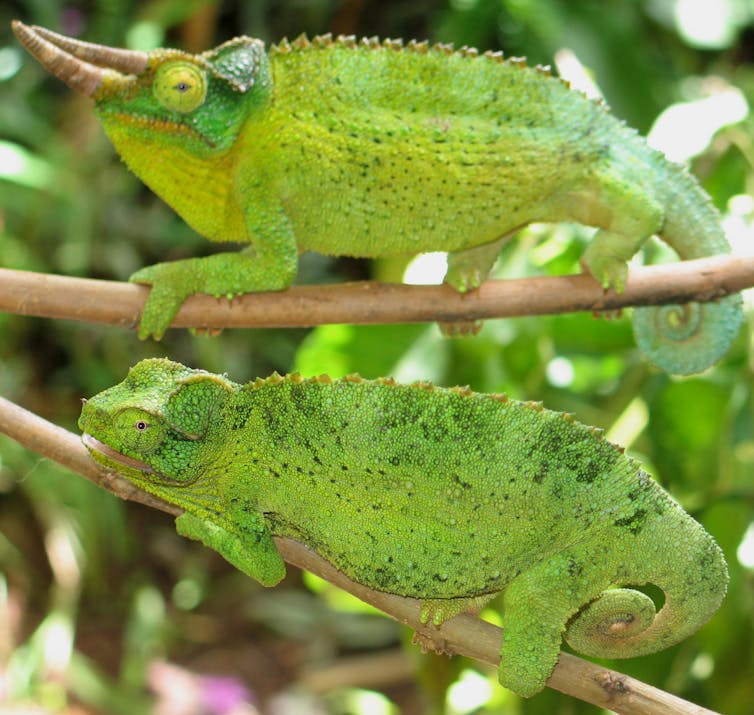
Martin Whiting.
A lengthy way from home
In 1972, about 36 Jackson’s chameleons built their way from their indigenous Kenya to the Hawaiian island of Oahu, destined for the pet trade.
The chameleons have been a small worse for put on by the time they arrived in Hawaii, pursuing a extended and taxing journey that would have started times just before they were loaded on to the plane in Nairobi.

Wikimedia Commons
The story goes that an Oahu pet shop operator, Robin Ventura, opened the crate in his garden to give them refreshing air and an possibility to recover. Presumably, he underestimated the velocity with which chameleons can shift (and get well) – and they promptly dispersed into the bordering place.
This founding inhabitants represented an accidental invasion, and subsequently turned an unplanned experiment in evolution. What transpires when an animal with vibrant social displays – from a population with loads of chicken and snake predators – is introduced to an island nearly absolutely free of predators?
Read through a lot more:
How do chameleons and other creatures alter color?
Evolution in motion?
We predicted Hawaiian chameleons, as a result of being relatively cost-free from predation, would have far more elaborate or brighter displays than their Kenyan counterparts. We also predicted they would be more conspicuous when considered by their East African predators, this sort of as birds and snakes.
In the animal kingdom, shiny or vibrant displays can appeal to the awareness of sharp-eyed predators. This lessens an unique animal’s likelihood of survival and, by extension, its reproductive conditioning (or the variety of genes it passes on to long run generations).
When survival is threatened, organic choice acts as a brake and halts the even further elaboration of colour, or shifts shiny colors to places of the system significantly less visible to predators.
For occasion, quite a few lizard species have vivid colors hid on their undersides or throats. In South Africa, male Augrabies flat lizards will signal to rival males by elevating their underside and exposing the throat, which is puffed out.
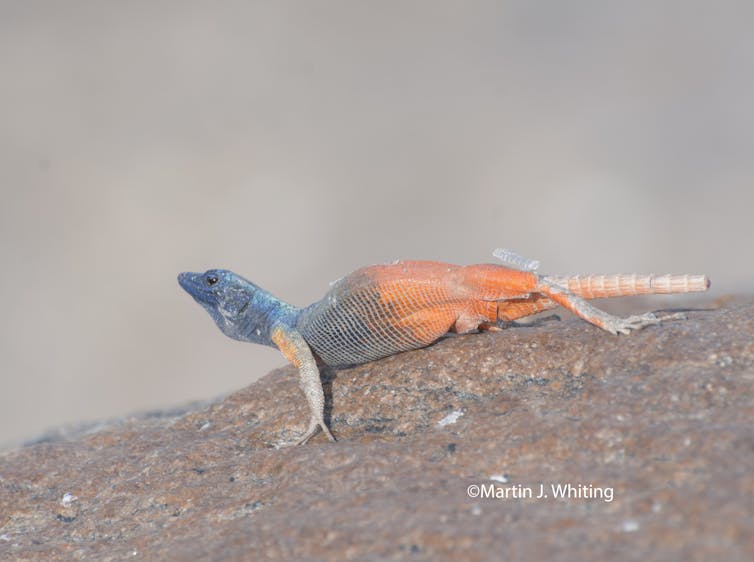
Martin Whiting
On the other hand, conspicuous shows might also improve fitness. For illustration, brighter or much more vibrant males may perhaps attain higher access to women, both by winning contests with rival males, or basically showing up more eye-catching to ladies.
This tug of war between survival and health and fitness is perfectly documented in species with fixed or seasonally dependent colouration. For occasion, guppies turn into significantly less vibrant when risky predators share their streams. Nonetheless, it is less comprehended in animals with dynamic color improve this sort of as chameleons.
Whilst we have a good knowledge of how chameleons modify color, we really do not know if they modulate their shows when there are much more predators in their natural environment. It may possibly also be that natural selection prevents them from making colour indicators that are vibrant or brilliant over and above a specified threshold.
To examination our predictions, we travelled to Kenya and Hawaii to analyze color transform in wild chameleons.
https://www.youtube.com/view?v=-G2WYnb265I
Vivid examination subjects
Chameleons are good examine topics since they have a incredibly solid stimulus reaction. You can pop them on a branch absent from their normal haunts and current them with a pretend predator or a further chameleon, and they will dedicate all their interest to the stimulus while entirely disregarding you!
We offered every male chameleon with a rival male, a feminine, a design chicken predator and a model snake predator – every single in a a person-on-just one interaction. During the presentations we measured their colour working with an optic spectrometer.

Martin Whiting
This instrument allows us to quantify two metrics of colour: chromatic distinction (primarily how vibrant they are) and luminance distinction (how dazzling they are). We could then estimate how detectable a displaying chameleon would be to an observer – be it a further chameleon, or a bird or snake predator.
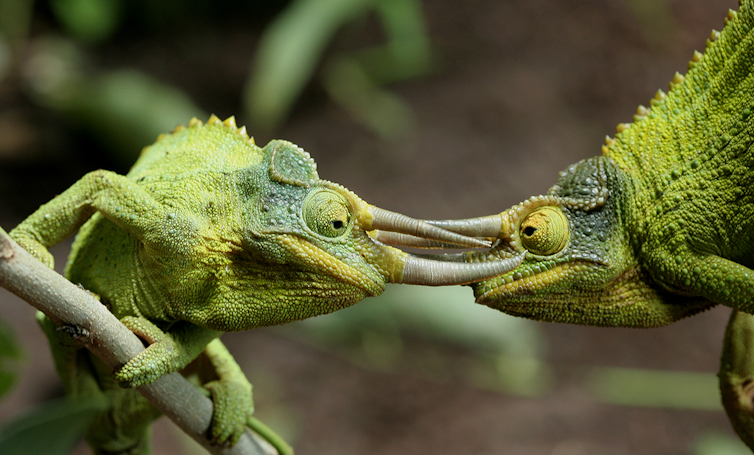
Devi Stuart-Fox
We also calculated the leafy vegetation that kinds the backdrop in opposition to which a chameleon signals. This way we could estimate how detectable a exhibiting chameleon would be from a certain background.
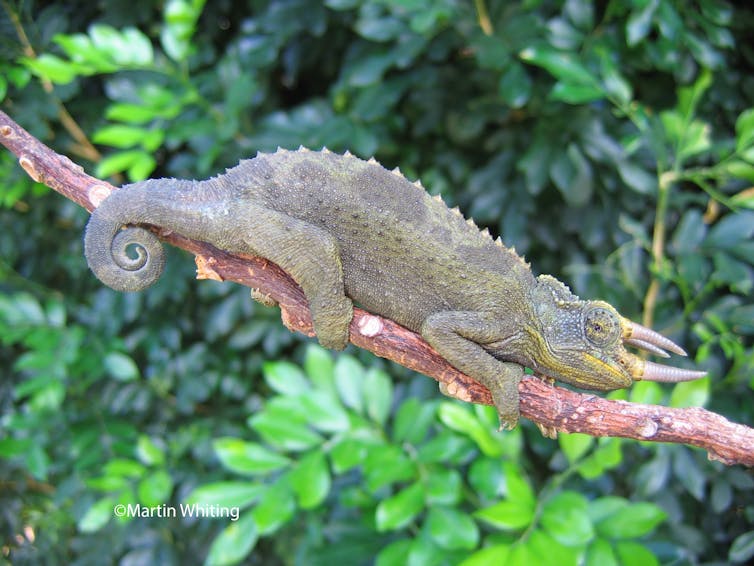
Martin Whiting
An enjoyable case in point of swift change
The success were being significantly thrilling and exceeded our expectations. We observed Hawaiian chameleons experienced considerably brighter displays than Kenyan chameleons throughout male contests and when courting women. They ended up also extra conspicuous against their Hawaiian qualifications than a Kenyan history.
This is regular with what researchers expression “local adaptation”. This is the concept that indicators will be good-tuned to be more detectable in the setting in which they are made use of.
For Hawaiian chameleons, 1 unintended consequence of becoming brighter was they were also additional detectable to their indigenous predators.
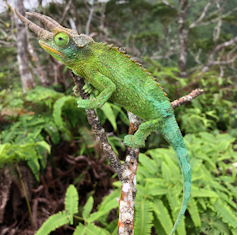
Brenden S. Holland, Author delivered
Interestingly, this outcome was a lot more pronounced when facing birds when compared to snakes – possibly because snakes have poorer colour discrimination than birds. Lastly, Hawaiian chameleons also had a higher capacity to transform colour than Kenyan chameleons – they could do so over a bigger range.
We just can’t be totally positive brighter indicators in Hawaiian chameleons signifies swift evolution. It is also possible this degree of colour change is owing to plasticity, which is when an animal improvements to a various point out because of to prevailing environmental ailments.
Even so, plasticity alone can evolve – and colour alter in chameleons may possibly be a combination of both of those evolutionary alter and plasticity.
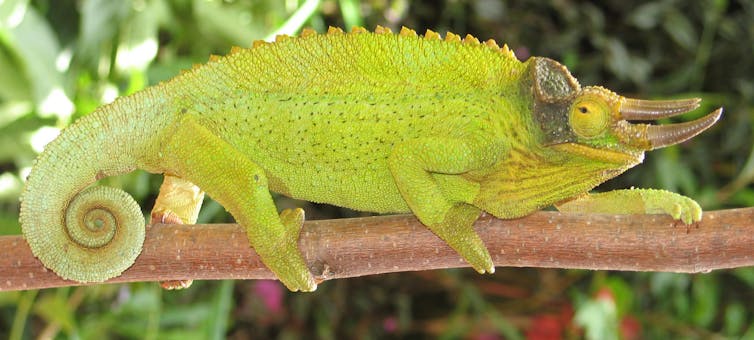
Martin Whiting







